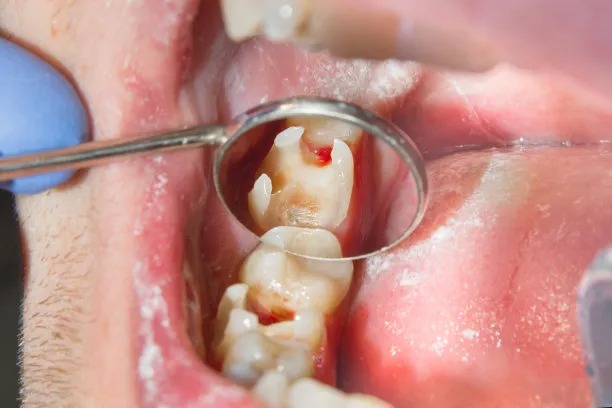The Necessary Steps and Considerations Involved in Extracting a Tooth for Optimal Dental Health
Summary: Extracting a tooth is a clinical procedure that requires careful planning and execution to ensure optimal dental health. This article details the necessary steps and considerations involved in tooth extraction, emphasizing the importance of patient assessment, anesthesia options, the extraction process itself, and post-operative care. By understanding these elements, patients and dental professionals can work together to ensure a safe and effective extraction, minimizing discomfort and promoting quicker recovery. The goal is to maintain, if not enhance, the overall dental health of the individual through proper extraction techniques.
1. Importance of Patient Assessment Before Extraction

Before any tooth extraction occurs, a thorough assessment of the patients dental and medical history is essential. This includes identifying any pre-existing conditions that may complicate the procedure, such as heart issues, diabetes, or allergies to certain medications. Dental professionals must gather all relevant information to tailor the extraction approach, ensuring the safety and comfort of the patient.
Additionally, a complete oral examination is crucial. This involves taking X-rays to allow the dentist to visualize the tooths root structure and surrounding bone. Understanding the positioning and condition of the tooth will aid in planning the extraction process, making it more efficient and less invasive. Diagnostic imaging plays a significant role in preparing for potential complications, such as impacted teeth or difficult-to-access roots.
Lastly, discussing the patients expectations and concerns provides an opportunity for the dentist to explain the procedure. Clear communication can alleviate anxiety and help patients understand the necessity of the extraction for their long-term dental health.
2. Anesthesia Options for Tooth Extraction
Once the assessment is complete, discussing anesthesia options is the next critical step. Local anesthesia is the most common choice for tooth extractions, as it numbs only the area around the tooth being treated while allowing the patient to remain awake and alert. This method is effective for straightforward extractions and typically involves minimal recovery time.
For patients with severe anxiety or those undergoing multiple extractions, sedation options may be appropriate. Sedation dentistry can provide a calming effect and help manage pain during the procedure. Dentists may opt for nitrous oxide (laughing gas) or oral sedatives, ensuring the patient remains comfortable throughout the extraction process. It is essential to monitor the patients response to sedatives to adjust dosages as needed.
In rare cases, general anesthesia may be recommended, especially for surgical extractions or in pediatric cases. This option requires careful consideration and must be administered by trained professionals in a controlled environment. A thorough discussion about the choice of anesthesia, including the risks and benefits, is crucial to ensure patient confidence and preparedness.
3. The Tooth Extraction Procedure Explained
Once anesthesia is administered, the extraction procedure begins. The dentist will first loosen the tooth in its socket, using specialized instruments to ensure minimal disruption to the surrounding gums and bone. This process may involve elevating the tooth and gently rocking it back and forth until it becomes detached.
For impacted or difficult-to-extract teeth, a surgical approach may be necessary. This entails making small incisions in the gum tissue to access the tooth more effectively, and sometimes removing a portion of the bone that may be obstructing the tooths path. Its vital that the dentist adheres to appropriate techniques to avoid complications such as excessive bleeding or infection.
After the tooth is removed, the dentist will clean the extraction site thoroughly to eliminate any debris. In some cases, stitches might be required to close the gums, promoting effective healing. Proper closure of the site minimizes the risk of post-operative complications and aids in the recovery process.
4. Post-Operative Care Considerations
Post-operative care is critical for optimal recovery after a tooth extraction. The dentist will provide instructions to manage pain and swelling, which typically include using over-the-counter pain relievers and applying ice packs to the cheek for the first 24 hours. Adhering to these recommendations is essential for a comfortable recovery.
Diet also plays a significant role in the healing process. Patients are generally advised to stick to soft foods and avoid hot or spicy items for a few days following the extraction. Hydration is equally important, but using straws should be avoided, as suction can dislodge the blood clot forming in the extraction site, potentially leading to complications like dry socket.
Regular follow-up visits are necessary to monitor the healing progress. Patients should be aware of warning signs that indicate issues, such as persistent pain, abnormal swelling, or signs of infection. Prompt communication with the dentist is vital in these situations to address any complications early.
Summary:
In conclusion, extracting a tooth involves a series of well-considered steps that ensure the patients optimal dental health. From thorough assessment and appropriate anesthesia options to an effective extraction process and careful post-operative care, each phase is designed to minimize discomfort and promote healing. Collaboration between the dentist and the patient is crucial for navigating this important dental procedure successfully, laying the foundation for future oral health.
This article is compiled by Vickong Dental and the content is for reference only



